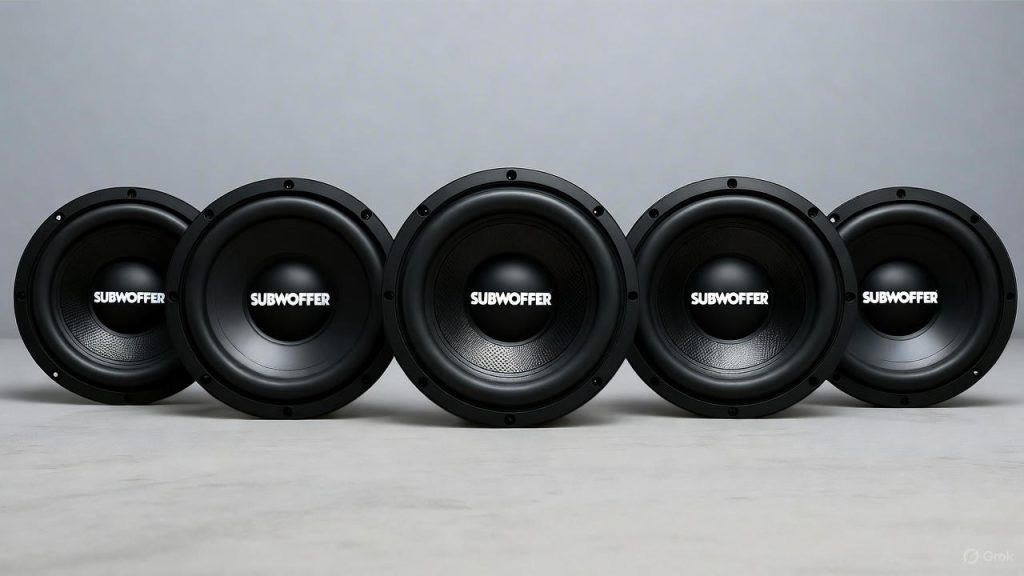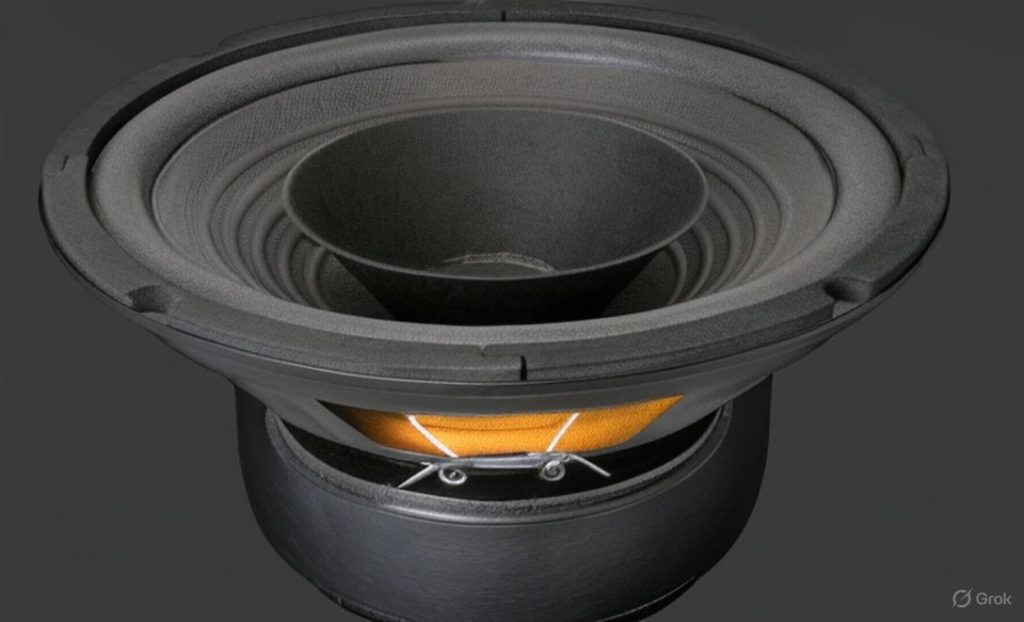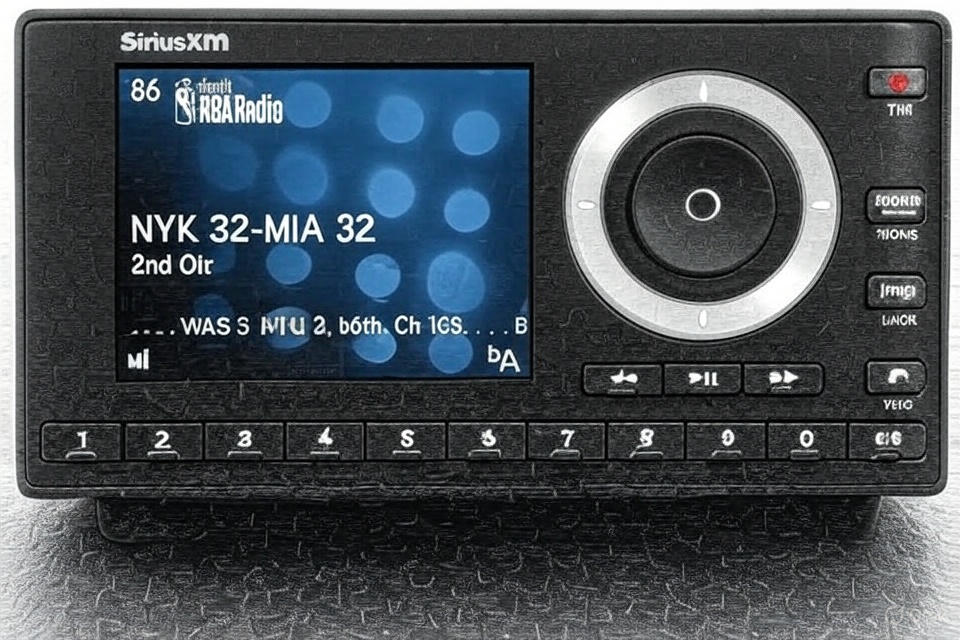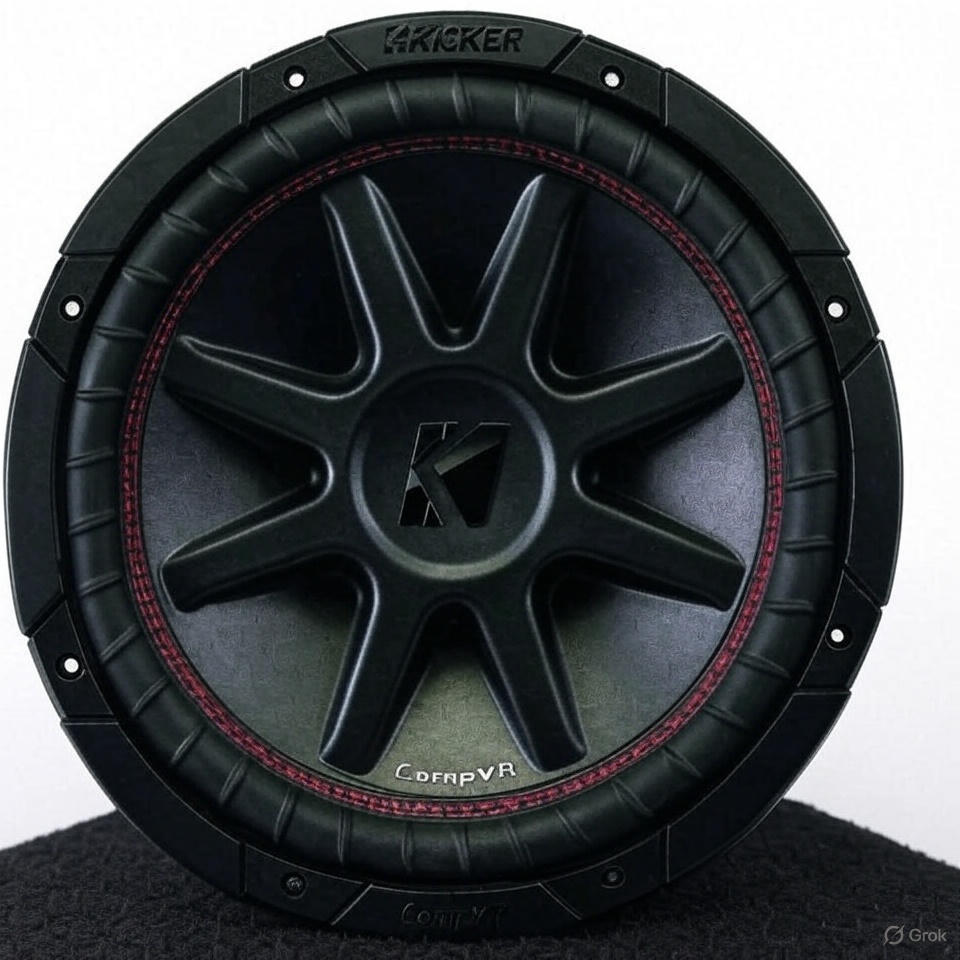Every car audio enthusiast knows that deep, powerful bass makes all the difference in your listening experience. A quality 10 inch subwoofer strikes the perfect balance between performance and space efficiency, delivering thunderous low-end frequencies without consuming too much trunk space. This comprehensive guide examines the top five 10 inch car subwoofers currently available, helping you find the ideal model for your vehicle’s audio system.
Why 10 Inch Subwoofers Are Perfect for Most Vehicles
The 10 inch subwoofer sits in the sweet spot of car audio equipment. These bass speakers deliver impressive low-frequency response while maintaining a compact footprint that fits most vehicles. Unlike larger 12 or 15 inch models, a 10 inch sub won’t dominate your entire trunk space. At the same time, these units produce significantly more bass than 8 inch alternatives.
Sound quality remains a primary consideration when upgrading your car stereo system. The 10 inch diameter provides enough surface area to move substantial air, creating those chest-thumping bass notes that bring music to life. The smaller cone compared to larger subwoofers also means faster response times, resulting in tighter, more accurate bass reproduction. This makes 10 inch models particularly well-suited for rock, electronic music, and hip-hop genres where precise low-end control matters.
Installation flexibility represents another major advantage. Most compact cars, sedans, and even smaller SUVs can accommodate a 10 inch subwoofer enclosure without major modifications. You can often place the speaker box under a seat, in a corner of the trunk, or in a custom-built enclosure that maximizes available space. The manageable size also makes DIY installation more accessible for those who prefer to handle their own car audio upgrades.
Power requirements for 10 inch subwoofers typically fall within a reasonable range. Most models work efficiently with amplifiers between 300 and 800 watts RMS. This means you won’t need to upgrade your vehicle’s alternator or install a second battery for most applications. The electrical demands remain manageable while still delivering plenty of bass output for everyday listening and even competitive sound pressure level competitions.
Top 5 Best 10 Inch Car Subwoofers Reviewed
1. Skar Audio SDR-10 D4 10″ 1200 Watt Max Power Dual 4 Ohm Car Subwoofer
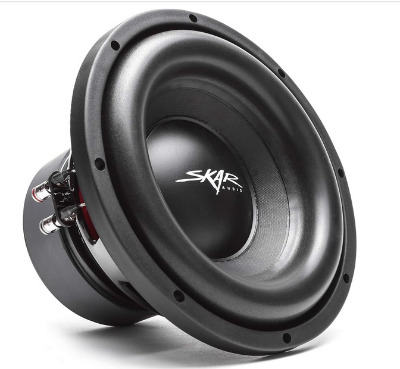
The Skar Audio SDR-10 D4 stands as a powerhouse in the competitive subwoofer market. This dual voice coil subwoofer features a robust design that can handle serious power while maintaining excellent sound quality. The 1200 watt maximum power rating provides plenty of headroom for aggressive listening sessions.
Build quality immediately impresses with this model. The stamped steel basket provides a solid foundation that resists flexing even during peak bass hits. A black non-pressed paper cone delivers excellent rigidity while keeping the moving mass low for responsive performance. The high-temperature voice coil uses copper winding to handle sustained high power levels without overheating or distorting.
The dual 4 ohm configuration offers excellent wiring flexibility. You can wire the coils in series for an 8 ohm load or in parallel for a 2 ohm final impedance. This versatility makes matching the subwoofer to your amplifier simple, regardless of your amp’s optimal load rating. Most users find the parallel 2 ohm configuration delivers the best combination of power handling and output.
Frequency response extends down to a genuine 35 Hz, capturing the deepest bass notes in most music. The upper response reaches 250 Hz, providing enough overlap with your main speakers for smooth integration. Sensitivity measures 85.2 dB, meaning the driver converts amplifier power into acoustic output quite efficiently. You don’t need a massive amplifier to achieve satisfying volume levels.
The recommended power range runs from 300 to 600 watts RMS. This makes the SDR-10 D4 suitable for mid-power audio systems where you want strong bass without investing in high-current amplification. The subwoofer performs best in sealed or ported enclosures between 1.0 and 1.75 cubic feet. Sealed boxes deliver tight, controlled bass ideal for rock and metal. Ported designs produce more output at lower frequencies, perfect for hip-hop and electronic dance music.
Sound characteristics lean toward the aggressive side. The SDR-10 D4 excels at delivering punchy, impactful bass that commands attention. Kick drums hit with authority, and basslines maintain excellent definition even at high volume levels. While audiophiles seeking the absolute last word in refinement might prefer other options, this Skar Audio model provides exceptional value for performance-oriented listeners.
Installation proves straightforward thanks to standard mounting dimensions. The 9.5 inch mounting depth means the subwoofer fits most prefabricated enclosures designed for 10 inch drivers. Spring-loaded push terminals accept up to 12 gauge wire, ensuring solid electrical connections that won’t vibrate loose over time.
2. Skar Audio SVR-10 D2 10″ 1600 Watt Max Power Dual 2 Ohm Car Subwoofer
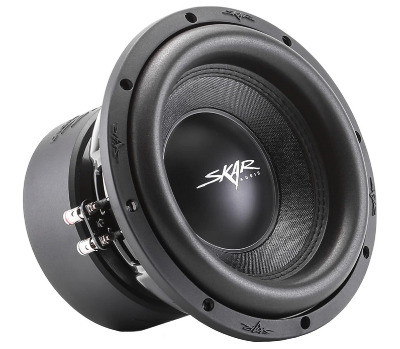
Skar Audio’s SVR-10 D2 takes performance up several notches compared to the SDR series. This competition-grade subwoofer handles up to 1600 watts of maximum power, making it suitable for serious audio installations where massive output matters. The dual 2 ohm voice coils provide excellent amplifier matching options for high-power systems.
Construction quality reflects this model’s performance intentions. The reinforced stamped steel basket incorporates additional bracing around the motor structure to maintain alignment under extreme conditions. A high-roll foam surround provides generous excursion capability, allowing the cone to move substantial distances without mechanical failure. The result is a subwoofer that plays extremely loud without distortion.
The voice coil measures a substantial 2.5 inches in diameter. This large coil diameter improves power handling and thermal dissipation compared to smaller voice coils. Copper winding on an aluminum former delivers an excellent balance between conductivity and weight. The coil can sustain high current levels for extended periods without burning out or losing performance.
Sensitivity comes in at 86.5 dB, representing solid efficiency for a power-hungry subwoofer. While you’ll need a substantial amplifier to realize the SVR-10’s full potential, the driver doesn’t waste electrical power as heat. Most of what your amp delivers converts into acoustic energy that moves air and produces bass.
Recommended RMS power ranges from 400 to 800 watts. This makes the SVR-10 D2 a true high-power subwoofer that demands quality amplification. Trying to drive this model with an underpowered amp will result in disappointing performance. However, when paired with an appropriate amplifier, the SVR-10 delivers bass output that rivals larger 12 inch subwoofers.
Frequency response spans from 32 Hz to 250 Hz, extending slightly lower than the SDR model. This extra low-end extension becomes noticeable with bass-heavy electronic music and movie soundtracks. The subwoofer reproduces those subsonic frequencies that you feel more than hear, adding visceral impact to your audio experience.
Enclosure requirements are similar to the SDR series. The SVR-10 works well in sealed boxes from 1.0 to 1.5 cubic feet or ported enclosures up to 2.0 cubic feet. Sealed alignments provide excellent transient response and maintain control over the driver at all volume levels. Ported boxes maximize output, particularly in the 35-50 Hz range where most bass-heavy music concentrates its energy.
Sound quality remains impressive despite the high power handling. The SVR-10 D2 produces clean, articulate bass that doesn’t blur together into a boomy mess. Individual bass notes remain distinct, and the subwoofer tracks complex bass passages without confusion. This level of refinement at high output levels separates quality subwoofers from mediocre ones.
The dual 2 ohm configuration offers two wiring options. Series connection yields 4 ohms final impedance, while parallel wiring results in 1 ohm. Most users opt for the 1 ohm configuration to extract maximum power from amplifiers stable at that impedance. Just ensure your amplifier can safely drive a 1 ohm load before connecting the subwoofer in parallel mode.
3. BOSS Audio Systems CXX10 Chaos Exxtreme Series 10 Inch Car Subwoofer
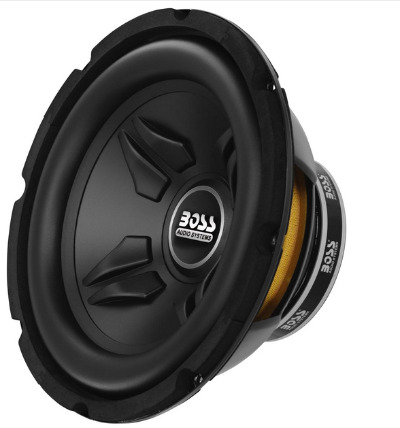
The BOSS Audio CXX10 represents an excellent entry point for those building their first serious car audio system. With 800 watts maximum power handling and an affordable price point, this subwoofer delivers solid performance without demanding a significant financial investment. The single 4 ohm voice coil simplifies wiring and amp matching.
Construction emphasizes reliability and consistent performance. The injection-molded polypropylene cone resists moisture and temperature extremes better than paper cones. This makes the CXX10 a smart choice for vehicles stored outdoors or in humid climates where condensation might affect paper cone subwoofers. The cone’s ribbed design adds structural rigidity while keeping weight reasonable.
The rubber surround provides smooth excursion capability across the driver’s operating range. Rubber surrounds last longer than foam, maintaining their flexibility over time even when exposed to sun and heat through rear window glass. This durability means the subwoofer will perform consistently for many years with minimal maintenance.
Voice coil design uses a 1.5 inch diameter former with copper winding. While smaller than the massive coils in competition subwoofers, this size proves adequate for the CXX10’s power handling rating. The coil manages heat effectively at typical listening levels, and the vented pole piece helps dissipate thermal buildup during extended play sessions.
Sensitivity measures 87 dB, making the CXX10 one of the more efficient subwoofers in this comparison. This efficiency advantage means you can achieve satisfying bass levels with a modest amplifier. Even a 200-300 watt amp will drive the CXX10 to respectable volume levels in most vehicles. Budget-conscious builders can prioritize subwoofer quality over amplifier wattage.
Recommended RMS power ranges from 200 to 400 watts. This positions the CXX10 perfectly for small to medium-sized audio systems. You can power this subwoofer with an affordable 500-watt amplifier and still have headroom for peaks and dynamics. The modest power requirements also reduce strain on your vehicle’s electrical system.
Frequency response spans 40 Hz to 250 Hz, covering the essential bass range for most music genres. While the CXX10 doesn’t extend quite as low as premium models, the difference rarely matters in real-world listening. The subwoofer captures kick drums, bass guitars, and synthesizer bass lines with authority. Only pipe organ recordings and specialized test tones venture below 40 Hz with any significant energy.
Enclosure recommendations suggest 0.75 to 1.25 cubic feet for sealed boxes or 1.5 cubic feet for ported designs. These compact enclosure volumes make installation easier in space-constrained vehicles. You can often fit a properly sized box under a rear seat or in a trunk corner without sacrificing much storage space.
Sound characteristics favor accessibility over extreme performance. The CXX10 produces balanced, musical bass that complements various music genres. Rock music benefits from the driver’s punchy mid-bass response, while hip-hop tracks get enough low-end weight to satisfy most listeners. The subwoofer won’t rattle license plates from three blocks away, but it delivers satisfying bass for everyday enjoyment.
Installation couldn’t be simpler thanks to the single voice coil design. You connect one positive wire and one negative wire from your amplifier to the corresponding terminals on the subwoofer. No complicated series or parallel wiring calculations are necessary. This simplicity makes the CXX10 ideal for first-time installers who want to avoid potential wiring mistakes.
The 4 ohm impedance matches perfectly with most car audio amplifiers. Many budget and mid-range amps deliver their best power and efficiency into 4 ohm loads. You won’t need to rewire voice coils or worry about presenting your amplifier with an impedance it can’t handle properly.
4. PIONEER A-Series TS-A250D4 10″ Subwoofer
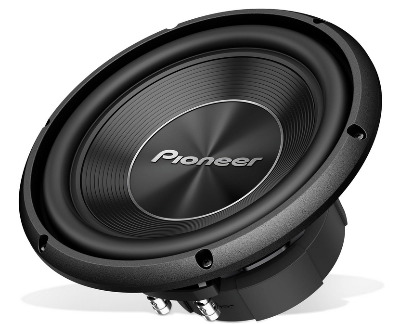
Pioneer brings decades of car audio expertise to the TS-A250D4. This subwoofer combines proven technology with modern materials to deliver reliable performance across a wide range of applications. The 1300 watt maximum power rating provides plenty of capability for most audio systems, while the dual 4 ohm voice coils enable flexible installation options.
Build quality reflects Pioneer’s manufacturing experience. The reinforced IMPP composite cone delivers excellent stiffness-to-weight ratio for accurate bass reproduction. This proprietary material resists distortion better than conventional paper or polypropylene cones. The result is cleaner bass with less harmonic distortion, particularly at higher volume levels where cone flex becomes problematic with inferior materials.
The elastic polymer surround combines the best characteristics of rubber and foam. It provides smooth, linear excursion like foam while offering the durability of rubber. Temperature extremes and ultraviolet light exposure don’t degrade the surround’s flexibility over time. This attention to longevity ensures the TS-A250D4 maintains its performance characteristics for the life of your vehicle.
Voice coil design incorporates a 1.5 inch diameter former with copper-clad aluminum wire. This hybrid approach balances conductivity with reduced moving mass. The lighter voice coil improves transient response, allowing the subwoofer to start and stop more quickly. This translates to tighter, more articulate bass that follows musical passages accurately.
The dual 4 ohm configuration opens up multiple wiring possibilities. Series connection yields 8 ohms, series-parallel allows 4 ohms when using multiple subwoofers, and parallel results in 2 ohms. This flexibility helps you match the subwoofer’s impedance to your amplifier’s optimal load regardless of your system configuration. Most single-subwoofer installations use the parallel 2 ohm connection for maximum power transfer.
Recommended power handling spans 350 to 650 watts RMS. This range accommodates both modest amplifiers and more substantial power sources. The subwoofer scales its performance according to available power. With a conservative 350-watt amp, the TS-A250D4 delivers satisfying bass for typical listening. Feeding it 650 watts unlocks considerably more output capability for those who demand louder volumes.
Sensitivity measures 86 dB, representing good efficiency for a subwoofer with this power handling capacity. You don’t need thousands of watts to achieve room-filling bass. The TS-A250D4 converts electrical power into acoustic energy quite effectively, reducing the strain on your vehicle’s charging system while maintaining strong output levels.
Frequency response extends from 38 Hz to 250 Hz, covering the core bass range comprehensively. The lower limit captures most of the fundamental frequencies in popular music. Only specialized electronic music and movie soundtracks venture significantly below 38 Hz. The upper response integrates smoothly with most full-range speakers for seamless low-pass filter tuning.
Pioneer recommends enclosure volumes between 0.85 and 1.70 cubic feet depending on alignment. Sealed boxes around 0.85 cubic feet deliver the tightest bass response with excellent transient accuracy. Ported enclosures in the 1.5 to 1.7 cubic foot range maximize low-frequency output at the expense of some control. The subwoofer adapts well to either approach based on your musical preferences and available space.
Sound quality leans toward refinement rather than raw impact. The TS-A250D4 produces balanced, neutral bass that serves all music genres equally well. Classical music lovers appreciate the subwoofer’s ability to reproduce upright bass and timpani with natural tonality. Rock fans enjoy solid kick drum punch without excessive bloom or overhang. Electronic music enthusiasts get satisfying low-frequency extension with good definition.
Installation benefits from Pioneer’s attention to practical details. Standard mounting dimensions ensure compatibility with most prefabricated enclosures. The 9.25 inch mounting depth allows installation in reasonably shallow enclosures without requiring excessive clearance behind the box. Dual terminals accept banana plugs, spade connectors, or bare wire up to 12 gauge for secure connections.
5. Seventour 10 Inch 1200W Max Power Car Audio Dual 4 Ohm Car Subwoofer
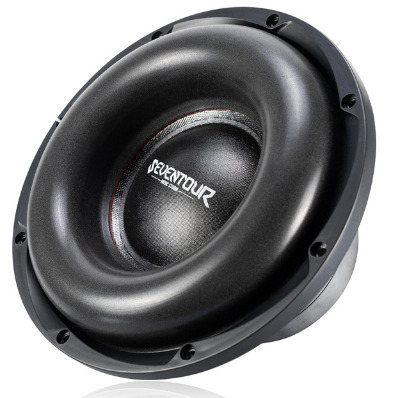
The Seventour 10 inch subwoofer delivers impressive performance at an attractive price point. This dual 4 ohm model handles 1200 watts maximum power while maintaining a focus on value-oriented buyers. The subwoofer incorporates many features typically found on more expensive models, making it worth serious consideration for budget-conscious audio enthusiasts.
Construction quality exceeds expectations for the price category. The stamped steel basket provides adequate rigidity to maintain voice coil alignment during operation. While not as massively overbuilt as competition-grade baskets, the structure proves sufficient for typical automotive installations. Mounting holes align with standard patterns, ensuring compatibility with most enclosures.
The black paper cone offers good balance between stiffness and damping. Paper cones produce natural-sounding bass with minimal coloration when properly designed. The cone’s profile and ribbing pattern resist flex modes that would otherwise cause distortion. A treated coating improves the cone’s resistance to moisture and temperature variations.
Foam surround design provides generous excursion capability relative to the subwoofer’s size. The surround’s roll geometry allows smooth movement across the full range of motion. This translates to clean bass reproduction even when pushing the subwoofer to high volume levels. Proper break-in over the first several hours of use will maximize the surround’s flexibility and longevity.
The voice coil measures approximately 1.5 inches in diameter with copper winding. This conventional design handles the subwoofer’s rated power without issues when paired with appropriate amplification. Thermal management remains adequate for typical listening sessions, though extended full-power operation may cause some thermal compression. Allowing brief cool-down periods during extreme use maintains optimal performance.
Dual 4 ohm voice coils provide the expected wiring flexibility. Series connection results in 8 ohms, while parallel wiring yields 2 ohms final impedance. Most users select the 2 ohm parallel configuration to extract maximum power from their amplifiers. Just verify your amp can safely drive 2 ohm loads before finalizing the connection.
Recommended RMS power ranges from 300 to 600 watts based on the subwoofer’s specifications. This positions the Seventour model squarely in the mid-power category. A quality 600-watt amplifier will drive the subwoofer to satisfying output levels for most listeners. Conservative users can opt for 400-500 watt amps and still achieve strong bass performance.
Sensitivity specifications suggest efficiency comparable to other subwoofers in this price range. While exact dB figures vary between production runs, the Seventour model converts amplifier power into acoustic output reasonably well. You won’t need an amplifier significantly larger than the recommended power range to achieve good results.
Frequency response likely extends from approximately 40 Hz to 250 Hz based on the driver’s physical characteristics. This range captures the essential bass frequencies for popular music genres. The subwoofer handles kick drums, bass guitars, and synthesizer bass lines effectively. Only the deepest pipe organ notes and specialized test material venture below the driver’s usable response.
Enclosure requirements follow typical 10 inch subwoofer guidelines. Sealed boxes between 0.75 and 1.25 cubic feet deliver tight, controlled bass response. Ported enclosures from 1.5 to 2.0 cubic feet maximize output at lower frequencies. The subwoofer adapts to either alignment based on your priorities and available space.
Sound characteristics emphasize value and versatility. The Seventour subwoofer produces solid bass output without obvious weaknesses across typical music genres. Rock music gets adequate punch and impact. Hip-hop tracks receive satisfying low-frequency weight. Electronic music benefits from reasonable extension and decent control. While refined audiophiles might detect some limitations compared to premium models, most listeners will find the performance entirely satisfactory.
Installation follows standard practices with no unusual requirements. Mounting depth and diameter conform to industry norms, allowing use with prefabricated enclosures. Spring-loaded terminals accept wire gauges appropriate for the power levels involved. Connection polarity marking ensures correct amplifier hookup.
The Seventour subwoofer makes the most sense for budget-oriented builders who need solid performance without premium pricing. First-time installers appreciate the subwoofer’s forgiving nature and straightforward installation. Experienced enthusiasts recognize the model’s value proposition, understanding that it delivers most of what more expensive subwoofers provide at a fraction of the cost.
Key Factors to Consider When Buying 10 Inch Subwoofers
Power Handling Specifications
Power handling represents one of the most misunderstood specifications in car audio. Manufacturers typically list both RMS and maximum power ratings. The RMS figure indicates continuous power handling, while maximum ratings reflect short-term peak capability. Smart buyers focus primarily on RMS ratings when matching subwoofers to amplifiers.
Matching amplifier power to subwoofer capacity requires some thought. The common recommendation suggests amplifiers rated at 75-100% of the subwoofer’s RMS rating. This provides adequate power for full performance without excessive risk of voice coil damage. Underpowering a subwoofer usually causes more damage than slight overpowering because distorted amplifier signals contain more heat-generating high-frequency content.
Your listening habits influence ideal power levels. Casual listeners who rarely max out their volume controls can safely use amplifiers at the lower end of the recommended range. Bass enthusiasts who frequently push their systems hard should opt for amplifiers closer to or slightly above the subwoofer’s RMS rating. Just avoid extreme mismatches where you’re trying to extract 800 watts from a subwoofer rated for 400 watts RMS.
Quality matters more than quantity with amplifier power. A clean 400-watt amplifier from a reputable manufacturer will drive a subwoofer harder and safer than a distorted 600-watt unit from a questionable brand. Clipping and distortion generate high-frequency harmonics that cook voice coils rapidly. Clean power within ratings preserves subwoofer longevity.
Voice Coil Configuration
Voice coil configuration affects wiring options and final impedance load presented to your amplifier. Single voice coil (SVC) subwoofers offer one positive and one negative terminal. You connect these directly to your amplifier with no other options. The impedance you buy is the impedance you get.
Dual voice coil (DVC) subwoofers provide two separate coils, each with positive and negative terminals. You can wire these coils in series to add their impedances or in parallel to cut the impedance in half. This flexibility helps match the subwoofer to your amplifier’s optimal load impedance regardless of whether you bought 2 ohm or 4 ohm voice coils.
Series wiring connects the positive terminal of coil one to the negative terminal of coil two. Your amplifier connects to the remaining positive and negative terminals. This configuration adds the coil impedances together. Two 4 ohm coils in series yield 8 ohms final impedance.
Parallel wiring connects both positive terminals together and both negative terminals together. Your amplifier connects to the common positive and common negative connections. This configuration cuts the impedance in half. Two 4 ohm coils in parallel produce 2 ohms final impedance.
Most car audio amplifiers operate most efficiently at specific impedances. Class D amplifiers often work best at 2 ohms for maximum power output. Class AB amps typically prefer 4 ohm loads. Checking your amplifier’s specifications before buying subwoofers helps ensure optimal matching.
Sensitivity Ratings
Sensitivity specifications measure how efficiently a subwoofer converts electrical power into acoustic output. The rating indicates sound pressure level in decibels at one meter distance when driven with one watt of power. Higher numbers mean more output per watt of amplifier power.
Typical car subwoofer sensitivity ranges from 82 to 90 dB. Each 3 dB increase represents a doubling of acoustic power, meaning a 90 dB subwoofer plays twice as loud as an 87 dB model when both receive identical power. This efficiency advantage reduces amplifier power requirements substantially.
High sensitivity designs use stronger magnetic motors and lighter moving assemblies to maximize output per watt. These subwoofers work well with modest amplifiers, making them ideal for budget systems or vehicles with limited electrical capacity. You can achieve satisfying bass levels without massive amplifiers or electrical system upgrades.
Low sensitivity subwoofers require more power to achieve equivalent output levels. However, they often handle more power overall and may provide superior sound quality. Competition subwoofers frequently sacrifice efficiency for maximum power handling and output capability. These designs demand high-current amplifiers and robust electrical systems.
Efficiency versus performance represents a fundamental tradeoff. Highly efficient subwoofers let you build capable systems with modest amplifiers. Power-hungry designs require serious amplification but often deliver superior performance when properly powered. Your priorities and budget determine which approach makes more sense.
Frequency Response
Frequency response specifications indicate the range of bass frequencies a subwoofer can reproduce. The numbers typically show the low-frequency limit where output drops 3 dB below reference level and the high-frequency limit where the same 3 dB down point occurs. Wider ranges seem better but require context to interpret properly.
Most music concentrates its bass energy between 40 and 120 Hz. Kick drums typically output around 50-80 Hz. Bass guitars operate from roughly 40-200 Hz depending on the note. Synthesizer bass can extend from 30-150 Hz. Very few recordings contain significant energy below 30 Hz except movie soundtracks and electronic dance music.
Subwoofers with response extending to 30-35 Hz capture nearly all bass content in recorded music. Models limited to 40 Hz still reproduce the vast majority of bass information. Only specialized material benefits from response extending below 30 Hz. This suggests that extreme low-frequency extension, while impressive, provides diminishing returns for typical music listening.
The high-frequency limit matters less since crossover filters remove content above a certain point anyway. Most installers set subwoofer low-pass filters between 60 and 100 Hz. This ensures clean handoff to full-range speakers without overlap that would cause frequency response peaks or cancellations. Subwoofers capable of playing to 200-250 Hz provide adequate overlap for smooth integration.
Flat frequency response matters more than extended response. A subwoofer with smooth, even output from 35-150 Hz sounds better than one reaching down to 25 Hz with massive peaks and dips throughout its range. Quality designs maintain tight response tolerances rather than chasing extreme specifications.
Enclosure Type Requirements
Enclosure design dramatically affects subwoofer performance. The two primary types are sealed and ported, each offering distinct advantages. Sealed boxes provide simple construction, compact size, and excellent transient response. Ported enclosures deliver more output, particularly at lower frequencies, but require larger boxes and more complex construction.
Sealed enclosures create an air spring behind the subwoofer cone that limits excessive excursion. This produces tight, controlled bass with fast attack and decay. Music with rapid bass transients like rock and metal benefits from sealed alignments. The compact size also helps in space-limited installations.
Ported enclosures use a tuned port or vent to enhance low-frequency output. The port resonates at a specific frequency, providing an acoustic boost that increases output 3-6 dB in the tuned range. This free gain makes ported boxes appealing for bass-heavy music genres. The tradeoff comes in larger box requirements and potentially less precise transient response.
Box volume recommendations from manufacturers provide a starting point for good performance. Sealed boxes typically range from 0.75 to 1.5 cubic feet for 10 inch subwoofers. Ported enclosures generally require 1.25 to 2.5 cubic feet including port displacement. Building boxes to these specifications ensures the subwoofer operates within its design parameters.
Port tuning frequency affects ported enclosure behavior significantly. Lower tuning (25-30 Hz) extends bass response deeper but requires larger boxes. Higher tuning (35-45 Hz) provides more mid-bass punch in a smaller enclosure. Most ported designs for car audio tune between 32 and 38 Hz for balanced performance.
Build Quality and Materials
Component quality determines longevity and consistent performance. Premium subwoofers use better materials throughout, from the cone to the voice coil to the basket structure. These improvements cost more but deliver superior reliability and sound quality.
Cone materials affect both durability and sound characteristics. Paper cones offer excellent internal damping for natural sound but require moisture protection. Polypropylene resists environmental factors but may sound slightly less refined. Composite materials attempt to combine advantages of both approaches. Each material has merit when properly implemented.
Surround materials influence excursion capability and longevity. Foam surrounds provide smooth, predictable behavior but may deteriorate after extended exposure to heat and UV light. Rubber surrounds last longer but cost more. Polymer surrounds split the difference. Quality examples of any material type will provide years of reliable service.
Voice coil construction impacts power handling and thermal management. Copper wire offers excellent conductivity but weighs more. Aluminum wire reduces moving mass but requires larger wire gauges for equivalent conductivity. Copper-clad aluminum wire attempts to balance these factors. The coil former material and venting arrangement also affect heat dissipation.
Basket design provides the structural foundation for all other components. Stamped steel baskets offer good rigidity at reasonable cost. Cast aluminum baskets provide superior strength and heat dissipation but cost significantly more. Even plastic baskets can work adequately in budget subwoofers if properly designed. The basket must maintain voice coil alignment under all operating conditions.
Installation Tips for Maximum Performance
Proper installation makes the difference between disappointing bass and system performance that exceeds expectations. Following best practices ensures your subwoofer operates optimally while avoiding common mistakes that compromise sound quality or cause damage.
Enclosure Construction and Placement
Box construction quality directly impacts subwoofer performance. Even the best driver sounds mediocre in a poorly built enclosure. Use 3/4 inch MDF for most applications, as it provides excellent rigidity and acoustic damping properties. Lighter materials like particle board or thin plywood flex during operation, reducing output and causing rattles.
All joints require solid construction with both wood glue and screws. Apply glue liberally to all mating surfaces, then secure with quality wood screws every 3-4 inches. This creates an airtight seal that prevents pressure losses. Any air leaks reduce output and cause audible port noise even in sealed designs.
Internal bracing improves large panels’ rigidity. Boxes with panels exceeding 12 inches in any dimension benefit from braces that divide the span. This prevents panel flex that robs bass energy and causes frequency response irregularities. Simple cross-braces constructed from 1×2 or 1×3 lumber work effectively.
Port construction requires careful attention in ported designs. Use smooth-walled tubes rather than rolled cardboard or flared slot ports. The port must be long enough to achieve the desired tuning frequency at the internal diameter you’re using. Port velocity should stay below 20 meters per second to avoid audible noise. Online calculators help determine correct port dimensions.
Placement location affects output significantly. Corner loading increases bass output by using room boundaries as extensions of the enclosure. Trunk installations sound loudest with the subwoofer firing toward the rear seat, though some vehicles favor different orientations. Experiment with positioning during initial setup to find the location that produces the best balance of output and sound quality.
Amplifier Matching and Settings
Amplifier selection should complement your subwoofer’s characteristics. Match the amp’s power output to the subwoofer’s RMS rating as discussed earlier. Also ensure the amplifier can drive the final impedance load your subwoofer(s) present after wiring.
Amplifier stability at your chosen impedance matters tremendously. Some amps tolerate 2 ohm loads easily while others overheat or fail. Competition amplifiers often operate reliably at 1 ohm or even 0.5 ohm loads. Check your amplifier’s specifications carefully before finalizing your wiring configuration.
Gain adjustment remains one of the most commonly misunderstood settings. The gain control is NOT a volume knob. It matches the amplifier’s input sensitivity to your head unit’s output voltage. Set it too high and you introduce distortion. Set it too low and you limit maximum clean output.
The proper gain-setting procedure uses a dynamic multi-tone test track or basic sine wave. Set your head unit to 75-80% maximum volume, then slowly increase amplifier gain until you hear distortion or see the amp’s clipping indicator light. Back the gain off slightly from that point. This provides maximum clean output without clipping.
Low-pass filter frequency determines where the amplifier begins reducing signal to the subwoofer. Most installations work best with the filter set between 60 and 100 Hz. Higher settings risk overlap with your main speakers that causes frequency response peaks. Lower settings may create a gap in coverage where neither speakers nor subwoofer produce strong output.
Subsonic filter setting protects the subwoofer from potentially damaging low-frequency content below its usable range. Set the subsonic filter about 5-10 Hz below the subwoofer’s low-frequency response limit. This prevents excessive excursion at frequencies the driver can’t reproduce effectively anyway. Sealed enclosures typically use a 25-30 Hz subsonic point. Ported boxes need settings matching their tuning frequency.
Bass boost controls should be used sparingly if at all. These circuits increase low-frequency output at a specific frequency, typically 40-50 Hz. While they can add impact to bass-light recordings, excessive boost causes distortion and risks driver damage. Start with bass boost set to zero and only add minimal amounts if your system sounds lean.
Electrical System Considerations
Adequate electrical supply prevents performance limitations and component damage. Car audio systems with total amplifier power exceeding 500-600 watts should verify their vehicle’s charging system can handle the load.
Voltage drop testing reveals electrical system weaknesses. Measure battery voltage with the engine running and all accessories off to establish a baseline. Then play music at high volume while monitoring voltage. If voltage drops below 12.5 volts under load, your charging system struggles to keep up. Below 12.0 volts indicates serious deficiency requiring upgrades.
The big three upgrade improves current flow through critical electrical system connections. This involves replacing the factory ground from the battery to chassis with 4 gauge wire, upgrading the ground from engine block to chassis with 4 gauge wire, and installing a 0 or 1 gauge wire from alternator output directly to the battery positive terminal. These upgrades reduce resistance and improve voltage stability.
Battery upgrades help systems with moderate power requirements. High-capacity batteries with more cranking amps provide reserve capacity during heavy bass passages. AGM batteries offer superior performance compared to conventional flooded batteries. They handle deep discharge cycles better and maintain voltage stability under high current draw.
Capacitors represent a controversial topic in car audio. Large capacitors store electrical energy and theoretically release it during bass peaks. However, they can’t create power that doesn’t exist. If your alternator can’t keep up with demand, a capacitor only delays the inevitable voltage drop. Addressing charging system capacity makes more sense than adding capacitors as a band-aid solution.
High-quality power and ground cables ensure minimal voltage loss. The amplifier power cable should match the total fused amperage feeding your amplifiers. Systems drawing 50-75 amps need 4 gauge wire. Systems pulling 75-125 amps require 2 gauge. Larger systems demand 0 gauge or even 00 gauge wire. Ground cables should match or exceed power cable size for balanced current flow.
Fuse protection safeguards your vehicle against fire in case of short circuits. Install the main fuse within 18 inches of the battery connection. The fuse rating should be 10-20% higher than your amplifier’s maximum current draw. Never use a fuse significantly larger than necessary, as this defeats the protection purpose.
Wiring Best Practices
Speaker wire gauge affects power transfer efficiency. Subwoofer runs shorter than 10 feet work fine with 14 gauge wire. Runs between 10-20 feet benefit from 12 gauge. Longer runs or high-power applications demand 10 gauge or larger. Using oversized wire costs little extra but guarantees minimal voltage drop.
Signal cables should route away from power cables to prevent noise. Run RCA signal cables along one side of the vehicle and power cables along the other. If they must cross, do so at 90-degree angles to minimize interference. Quality RCA cables with good shielding resist noise better than cheap alternatives.
Connection quality matters as much as wire quality. Solder all connections when possible for the most reliable electrical contact. Crimped connections work acceptably if done properly with quality crimp connectors and tools. Twist-and-tape connections eventually fail and should be avoided entirely.
Terminal connections at the amplifier and subwoofer should be tight and secure. Loose connections create resistance that causes heat buildup. They also make intermittent contact during vibration, causing audible crackling or complete signal loss. Check all connections periodically to ensure they haven’t worked loose.
Polarity matters for subwoofer connections. All drivers in a multi-subwoofer system should move in the same direction simultaneously. Reversed polarity on one subwoofer causes cancellation that dramatically reduces output. Use a 9-volt battery to verify polarity if you’re uncertain. Momentary contact should make the cone move outward.
Common Mistakes to Avoid
New installers frequently make preventable errors that compromise system performance. Learning from others’ mistakes saves time, money, and frustration.
Underpowering or Overpowering
Many people believe underpowering a subwoofer keeps it safe. This actually causes more damage than slight overpowering. When you strain to achieve volume from an underpowered system, you turn the volume up until the amplifier clips. Clipped signals contain high-frequency harmonics that cook voice coils rapidly.
Overpowering within reason rarely causes problems if you exercise restraint with the volume control. A subwoofer rated for 500 watts RMS can handle 600 watts from a quality amplifier if you don’t constantly max out the volume. The danger comes from prolonged full-power operation or amplifiers so large that momentary inattention causes damage.
Matching amplifier power to subwoofer ratings provides the best balance. Aim for amplifiers delivering 75-100% of the subwoofer’s RMS rating at your final impedance. This ensures adequate power for full dynamics without excessive risk. Your listening habits can shift this percentage slightly up or down.
Incorrect Gain Settings
Setting amplifier gain by ear creates problems. The human ear adapts to distortion quickly, especially during bass frequencies. What sounds “fine” may actually be severely clipped, cooking your subwoofer’s voice coil without obvious warning signs.
Using a test tone or multi-tone test track provides objective gain calibration. DMMs measuring AC voltage offer even more precision but require mathematical calculations. The extra effort during setup prevents expensive component damage later. Proper gain settings also maximize clean output and improve sound quality.
Never set gain higher than necessary to achieve your desired maximum volume. Once you reach the point where increasing gain further causes audible distortion, you’ve found the limit. Further gain increases only add distortion without meaningful volume improvements.
Poor Enclosure Construction
Skimping on enclosure materials or construction quality destroys potential performance. A loose, rattling box turns premium subwoofers into mediocre performers. Panel flex absorbs energy that should become sound pressure. Air leaks reduce output and efficiency.
Using proper materials costs little extra but delivers dramatic improvements. Three-quarter inch MDF provides adequate rigidity for most applications. Doubled layers of 3/4 inch MDF or 1 inch MDF work even better for large enclosures or high-power systems. The extra investment in quality materials pays dividends in performance.
Taking time to build boxes properly ensures long-term reliability. All joints should use both glue and mechanical fasteners. Corners need reinforcement to withstand the stresses of high-power bass reproduction. A well-constructed enclosure lasts the lifetime of your vehicle and potentially beyond.
Ignoring Electrical System Capacity
Adding powerful amplifiers without verifying electrical system capacity leads to disappointing performance or component damage. Amplifiers need clean, stable voltage to operate correctly. Voltage dropping below 11 volts during operation causes protection circuits to activate or internal component damage.
Testing your vehicle’s charging capacity before finalizing your system design prevents problems. If your alternator can’t supply enough current, you either need electrical upgrades or scaled-back amplifier choices. Ignoring this reality results in a system that never performs to its potential.
Simple voltage monitoring during operation reveals charging system adequacy. Inexpensive voltage meters install easily and provide real-time feedback. Maintaining voltage above 12.5 volts under load indicates adequate electrical capacity. Lower voltages suggest the need for upgrades.
Skipping Sound Deadening
Vibrating body panels steal bass energy and create obnoxious rattles. Sound deadening materials convert vibration energy into heat, stopping panels from resonating. The result is louder, cleaner bass and a more pleasant listening experience.
Trunk installations benefit most from deadening the trunk floor and rear deck. These large panels resonate strongly at bass frequencies. Covering 25-50% of each panel’s surface area with quality damping material yields noticeable improvements. Complete coverage provides maximum benefit but costs more.
Door panels also benefit from damping material. Even if your subwoofer is in the trunk, door panels can rattle from bass energy transmitted through the vehicle structure. A small investment in damping material eliminates these irritating noises.
Sealed vs Ported Enclosures: Which Is Right for You?
Enclosure type dramatically affects system performance and characteristics. Neither sealed nor ported designs are universally superior. The best choice depends on your priorities, vehicle, and musical preferences.
Sealed Enclosure Advantages
Sealed boxes excel at transient response and accuracy. The air spring created by the sealed volume prevents excessive cone movement, improving control. Bass notes start and stop quickly with minimal overhang or bloating. This produces tight, articulate bass that serves all music genres well.
Compact size makes sealed enclosures practical for smaller vehicles. A properly designed sealed box typically requires 20-40% less volume than equivalent ported designs. This space efficiency helps installations where trunk space is at a premium. You can often fit a sealed enclosure where ported alternatives simply won’t work.
Simplified construction saves time and reduces error potential. Sealed boxes need only six panels cut to size and assembled with proper sealing. No port calculations or tuning concerns complicate the build process. First-time builders often find sealed designs more approachable.
Forgiving nature helps with installation mistakes. Sealed enclosures tolerate volume variations better than ported designs. Building the box 10% larger or smaller than ideal still yields acceptable performance. This margin for error provides peace of mind for DIY builders.
Ported Enclosure Advantages
Increased output represents the primary advantage of ported designs. The tuned port provides a 3-6 dB boost at the tuning frequency. This free gain is equivalent to doubling amplifier power in that frequency range. Systems needing maximum output benefit from this acoustic leverage.
Extended low-frequency response allows ported designs to play deeper than sealed alternatives. The port extends the usable bass response by approximately 5-10 Hz compared to sealed boxes with the same driver. This matters most for electronic music and movie soundtracks with significant content below 30 Hz.
Efficiency improvements reduce amplifier power requirements. The port’s acoustic gain means you need less amplifier power to achieve specific output levels. A 500-watt amp driving a ported design may match the output of 800 watts driving a sealed box. This efficiency advantage helps budget-conscious builders or vehicles with limited electrical capacity.
Making the Decision
Music preference guides enclosure selection significantly. Rock, metal, and acoustic music favor sealed designs for their tight, controlled bass. The fast transient response and accurate pitch definition serve these genres perfectly. You hear individual bass notes rather than generalized low-frequency rumble.
Electronic music, hip-hop, and rap often benefit from ported designs. These genres feature sustained bass notes and synthesized low frequencies where ported boxes excel. The extra output and extended response create the visceral impact these music styles demand. The slightly looser transient response rarely matters with synthesized instruments.
Available space constraints may dictate enclosure type. Vehicles with limited trunk space often require sealed designs to fit physically. Larger vehicles with generous cargo areas can accommodate ported designs without sacrificing functionality. Measure your available space carefully before finalizing your decision.
Power availability influences the sealed versus ported debate. Limited amplifier power or electrical capacity suggests ported designs for their efficiency advantage. Abundant power makes sealed designs viable even for high-output applications. Consider your complete system capabilities when making this choice.
Maximizing Sound Quality
Achieving maximum sound quality requires attention beyond just subwoofer selection. System integration, tuning, and proper setup transform good components into great-sounding systems.
Time Alignment and Phase
Time alignment ensures all speakers arrive at your ears simultaneously. Subwoofers located in the trunk fire from several feet behind the listener. Full-range speakers in the doors or dashboard are much closer. This distance difference means bass arrives later than midrange and treble.
Many head units include digital signal processing with time alignment features. These allow delaying the front speakers to match the subwoofer’s arrival time. Setting delays correctly produces a cohesive soundstage where bass integrates seamlessly with the rest of the frequency spectrum.
Phase adjustment affects how subwoofer output combines with your main speakers. Some amplifiers include variable phase controls, while others offer simple 0/180-degree switches. The correct setting produces the loudest bass at the crossover frequency. Incorrect phase causes cancellation and thin-sounding bass.
Testing phase involves playing music with strong content near your crossover frequency. Switch the phase control between positions while listening. The setting producing louder, fuller bass is correct. You can also use test tones and a sound pressure level meter for more objective measurements.
Equalization and Fine-Tuning
Graphic or parametric equalizers allow frequency response shaping. Most vehicles have acoustic problems causing response peaks or dips. Strategic equalization corrects these issues for flatter, more accurate sound. Cutting peaks generally works better than boosting dips to avoid overdriving amplifiers.
Real-time analyzers help identify frequency response problems objectively. These tools measure system output with pink noise or other test signals. The display shows which frequencies are too loud or too quiet. You then apply equalization to flatten the response as much as possible.
Subsonic filtering protects drivers from potentially damaging low-frequency content. These high-pass filters remove content below the driver’s usable frequency range. Sealed enclosures typically use 25-30 Hz subsonic filtering. Ported designs need the subsonic frequency set at or slightly below the port tuning frequency.
Crossover slope adjustment affects how sharply frequency division occurs. Gentle 12 dB per octave slopes provide wide overlap between speakers for smooth integration. Steep 24 dB per octave slopes create more defined separation. Most installations work best with 18-24 dB per octave crossovers.
Break-In Period
New subwoofers require a break-in period before reaching full performance potential. The suspension components need exercise to achieve full flexibility. This typically requires 10-20 hours of moderate-level playing. Avoid pushing new drivers to maximum power immediately.
The break-in process loosens voice coil adhesive and flexes surround material. This reduces stiffness that limits excursion initially. After proper break-in, the subwoofer moves more freely and produces more output. Sound quality may also improve slightly as the suspension characteristics stabilize.
Playing varied content during break-in ensures even suspension exercise. Include material with deep bass, punchy mid-bass, and everything in between. Avoid sustained sine waves at high power, as these can damage incompletely broken-in drivers. Normal music listening at moderate volumes works perfectly.
Maintenance and Longevity
Proper maintenance ensures years of reliable performance from your subwoofer system. Most issues are preventable with basic care and attention.
Regular Inspections
Visual inspection catches developing problems before they become serious. Check visible screws and fasteners quarterly to ensure nothing has vibrated loose. Tighten any connections showing signs of looseness. This simple check prevents rattles and maintains optimal performance.
Inspect electrical connections periodically, especially at the amplifier and subwoofer terminals. Corrosion or loosening can develop over time. Clean any corrosion with contact cleaner and ensure tight connections. Poor connections cause heating, voltage drops, and potential fire hazards.
Listen for unusual sounds during operation. Rubbing, scraping, or buzzing noises indicate potential problems. Voice coil rubbing suggests mechanical issues requiring professional repair. Buzzing from electrical connections needs immediate attention. Catching problems early prevents catastrophic failures.
Cleaning and Protection
Keep subwoofers clean and dry for maximum longevity. Dust accumulation on the cone and surround doesn’t affect performance significantly but looks bad. Gentle vacuuming or brushing removes accumulated dust without damaging components. Avoid touching the cone with your fingers, as oils can degrade materials over time.
Moisture protection matters, particularly in humid climates. Condensation can damage paper cones and corrode electrical connections. Keeping windows closed when parked helps control interior humidity. Silica gel packets in the trunk absorb excess moisture. These simple precautions prevent premature failure.
Temperature extremes stress subwoofer components. Parking in shade when possible protects against excessive heat. Extreme cold makes suspension components stiffer, requiring gentle warm-up before hard playing. These considerations are especially important in regions with harsh climates.
Avoiding Abuse
Playing beyond limits causes most subwoofer failures. Learn to recognize the signs of overstressing your equipment. Audible distortion, burning smells, or sudden volume drops indicate problems. Continuing operation under these conditions guarantees expensive repairs or replacement.
Allowing cool-down periods during extreme use extends component life. Sustained maximum power operation generates tremendous heat. Taking brief breaks lets voice coils dissipate accumulated thermal energy. This simple practice prevents thermal failure during extended listening sessions.
Respecting power limitations preserves your investment. Just because your subwoofer can handle 800 watts doesn’t mean it should receive that continuously. Reserve maximum power for occasional peaks and dynamics. Running at 60-70% of maximum rating 95% of the time dramatically extends service life.
Conclusion
Selecting the right 10 inch subwoofer transforms your vehicle’s audio system from ordinary to exceptional. The models reviewed here represent various price points and performance levels, ensuring suitable options for different budgets and requirements. The Skar Audio SDR-10 D4 delivers solid mid-power performance at an attractive price. The SVR-10 D2 takes performance further for enthusiasts demanding more output. The BOSS Audio CXX10 provides excellent entry-level value for first-time builders. Pioneer’s TS-A250D4 brings established brand reputation and refined engineering. The Seventour model offers budget-friendly performance for cost-conscious buyers.
Beyond simple product selection, proper system design ensures maximum enjoyment from your investment. Matching amplifiers correctly, building quality enclosures, maintaining adequate electrical capacity, and careful tuning separate mediocre installations from impressive systems. The information provided throughout this guide gives you the knowledge needed to make informed decisions and avoid common pitfalls.
Bass reproduction adds emotional impact and realism to recorded music. The physical sensation of deep bass frequencies creates engagement that small speakers simply cannot match. A properly implemented subwoofer system doesn’t just play louder—it reveals musical details and textures otherwise lost. Drum impacts gain weight and authority. Bass guitars develop full tonality. Electronic music achieves the visceral impact artists intended.
The 10 inch subwoofer format strikes an ideal balance for most applications. These drivers deliver genuine bass performance without excessive space consumption or power requirements. Whether you’re building your first system or upgrading an existing installation, the models and information presented here provide a solid foundation for success. Take your time evaluating options, plan your installation carefully, and enjoy the dramatic improvement quality bass brings to your driving experience.
